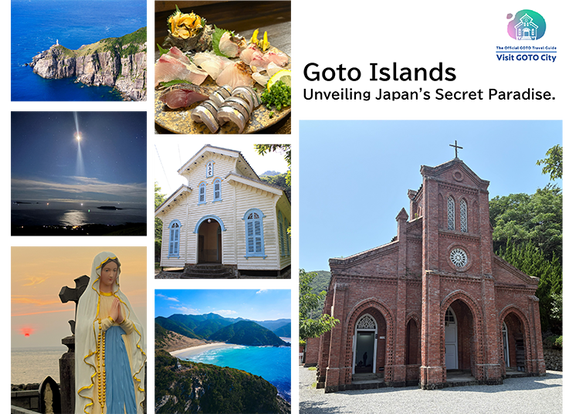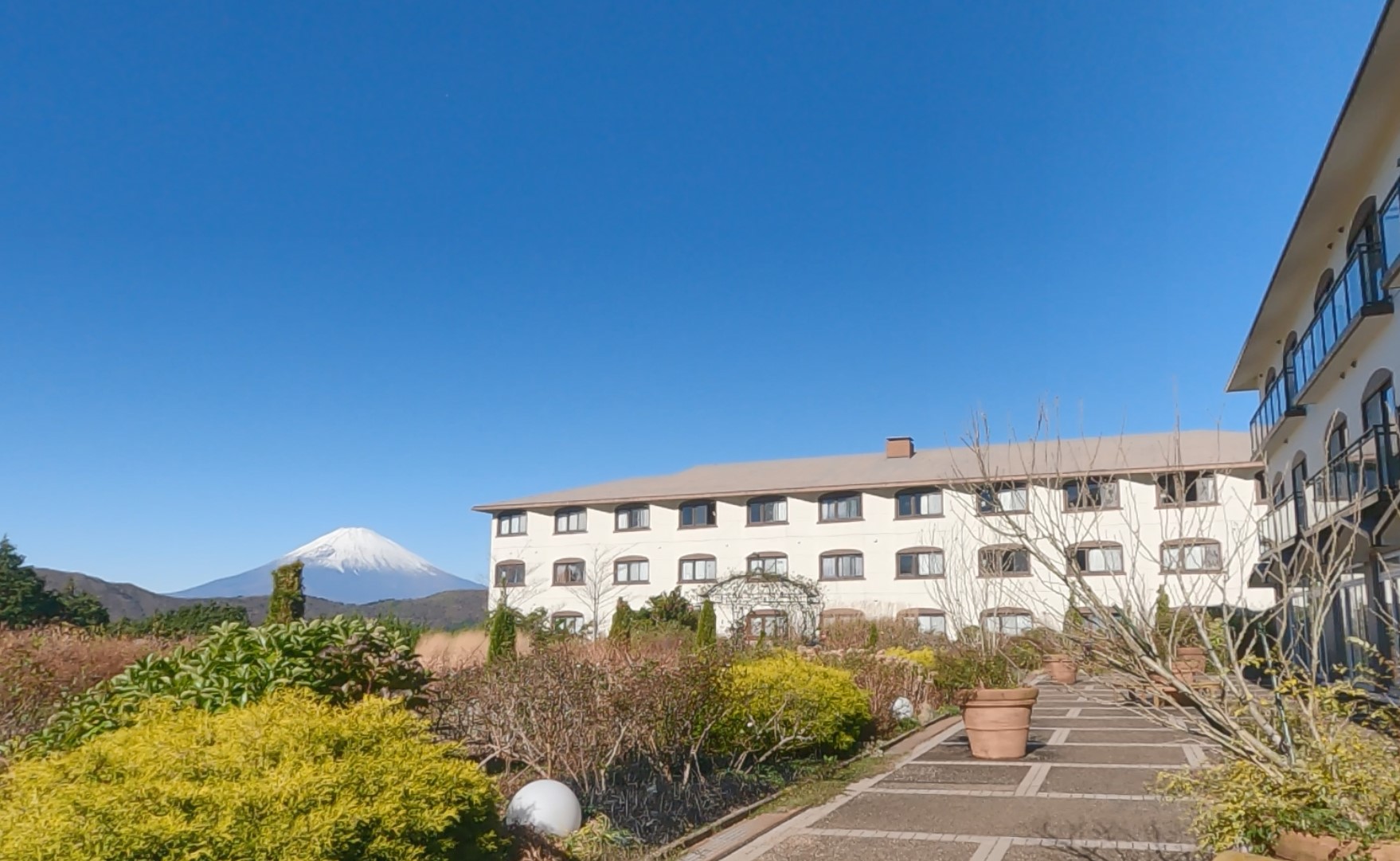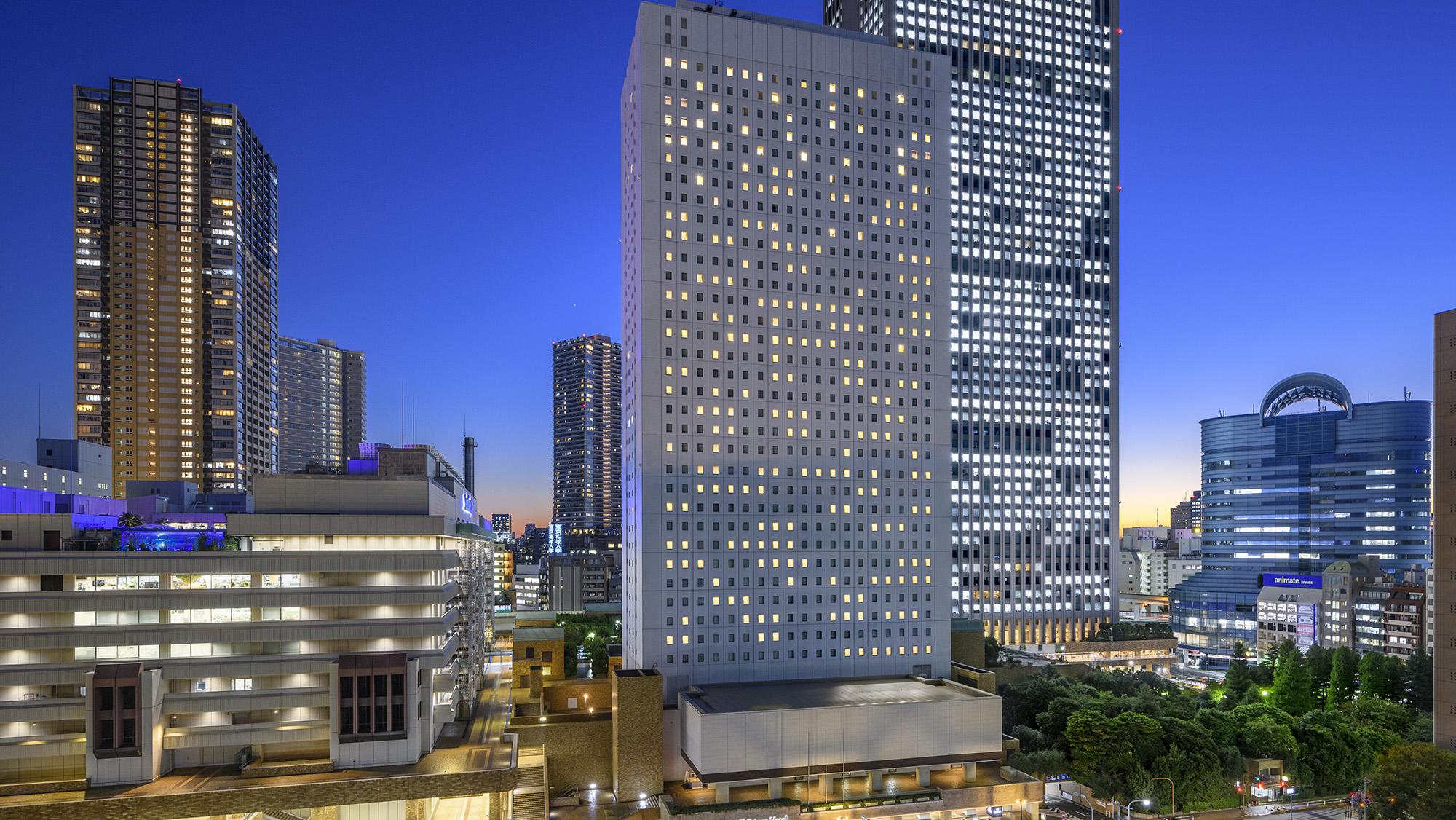
2025 Japan Summer Rainy Season & Weather Forecast for July–August
- Written by: LIVE JAPAN Editor
If you're thinking about a summer getaway this year, Japan is likely high on your list. With its rich mix of culture, cuisine, and shopping, it’s no wonder more travelers are arriving with curated, budget-friendly plans in hand.
To make the most of your trip, it’s important to look beyond just your itinerary and packing list—understanding the summer weather is key. While no one can control the forecast, timing your visit to avoid the rainy season can help you sidestep soggy sightseeing days.
You might assume Japan’s summer weather is similar to other nearby regions, but there are notable differences—especially in humidity and rainfall. If you're planning to visit during the peak months of July and August, having a clear idea of what to expect can make your experience much more enjoyable. In this guide, we’ll break down the 2025 summer weather outlook and offer practical tips for staying comfortable during your trip.
Japan’s 2025 rainy season began earlier than usual in some regions and later in others. Okinawa entered the season on May 22, 12 days later than average, while southern Kyushu started early on May 16. In Tokyo, the season began on June 7—two weeks earlier than last year—and is expected to end around July 19.
July Weather in Japan
Japan experiences a distinct rainy season known as tsuyu, and during this time, local weather reports provide detailed forecasts focusing on rainfall patterns across the country.
Typical July Weather in Japan
The rainy season usually continues until late July, bringing frequent rain and high humidity. It's also one of the hottest periods of the year.
- Kanto-Koshinetsu (Tokyo, Yamanashi, Nagano, Niigata): June 10
- Kansai (Osaka, Kyoto, etc.): June 9
- Northern Kyushu (Fukuoka, etc.): June 8
- Southern Kyushu: May 16
- Okinawa: May 22
- Hokkaido: No official rainy season, but a two-week stretch of frequent rain typically occurs between June and July
In 2024, the rainy season started later than usual but ended around the average time. In 2025, the timing has varied by region, with some areas starting earlier and others later than usual. Once the rainy season ends, intense heat is expected to follow.
In cities like Tokyo and Osaka, temperatures often exceeded 35°C (95°F) in 2024. If you're planning to visit in late July or early August, prepare for extreme heat and high humidity.

Japan's Meteorological Agency issues predictions about when the rainy season will end, but these estimates become more accurate only after mid-July.
The rainy season occurs as a stationary front stretches across much of Japan during the seasonal shift from spring to summer. Hokkaido, due to its northern position, typically isn’t affected by this front—meaning it doesn’t experience a true rainy season. However, Hokkaido still sees a roughly two-week stretch of high humidity and frequent rain between June and early July, often called a "false rainy season." If you're planning a trip there, it’s best to aim for mid-July or later.
One of the hallmarks of Japan's rainy season is not just the rain, but the intense humidity. This high moisture content means drugstores like Matsumotokiyoshi and supermarkets stock up on seasonal summer goods. Among the most popular items: cooling wipes. These refreshingly cold wet tissues are a staple for keeping sticky skin feeling clean and dry.
Even as the rainy season tapers off, it’s important not to let your guard down. The frequency of sudden showers and localized downpours—often referred to as guerrilla rainstorms—increases toward the end of tsuyu. If you're traveling during this time, always carry a compact folding umbrella.
Rainy Season Must-Haves for a Summer Trip to Japan
Rainy Season Essential – Rain Boots

With heavy rain during tsuyu, more and more people in Japan are opting for stylish yet practical rain boots. It's not uncommon to see women commuting in sleek, fashionable boots on rainy days.
Among the most popular choices are rain boots from the British heritage brand HUNTER. Known for their seamless construction and excellent waterproofing, these boots rose to prominence during the two World Wars in the UK and later gained worldwide popularity thanks to celebrity appearances at high-profile events.
While they're available globally, picking up a Japan-exclusive pair during your trip could be a fun and practical souvenir. In Tokyo, you can find them on the 1st and 2nd floors of Tokyu Plaza Ginza.
-
Hunter Ginza Flagship Storeハンター銀座フラッグシップストア
- Address 5 Chome-2-1 Ginza, Chuo City, Tokyo 104-0061
- Phone Number 03-3571-0109
・Hours: 11 AM–9 PM
・Closed: Open daily
Lightweight Folding Umbrella

Waterfront is one of Japan’s most popular umbrella brands, known for its lightweight folding umbrellas that are easy to carry and perfect for everyday use during the rainy season. With UV protection, they double as parasols as well.
According to the brand, tourists from abroad especially love designs with a distinct Japanese flair. While Waterfront umbrellas are available online in other countries, limited-edition models found only in Japan make great souvenirs. During tsuyu, it’s common for locals to carry one of these ultra-light umbrellas in their bag at all times.
Weighing just 166g, some models reveal subtle cherry blossom patterns when wet, giving the umbrella a beautiful 3D look.
Waterfront is so popular in Japan that you'll even find their displays in electronics stores—not just umbrella shops or department stores. With designs compact enough to resemble a pencil case and weighing as little as 100g, their umbrellas are available in a wide variety of men's and women's styles.
If your Tokyo itinerary takes you to Jiyugaoka, consider visiting their flagship store—it's often featured in local travel guides. You might score a great deal on limited editions or even pick up a matching pair for couples.
August Weather in Japan
Typical August Weather in Japan

It’s the height of summer—and the peak of the heat. Daytime highs frequently exceed 35°C (95°F), with the sun feeling harsh on the skin. Nights often bring little relief, with lingering heat creating uncomfortable tropical conditions.
One major factor that makes Japan’s summer feel especially intense is the humidity. High moisture levels can push the discomfort index way up. To beat the heat, many travelers opt to duck into department stores or shopping malls for both rest and retail therapy.
If you're visiting in August, checking the morning news at your hotel is a good habit. Even without understanding Japanese, weather maps with temperature icons make it easy to track the day’s forecast.
Heat-Relief Essentials
・Cooling Scarf – Soak it in water and wear it around your neck. Available at 100 yen shops and drugstores.
・Wipes for Sweat – Men’s types often include menthol for an extra-cool feel, while women’s versions come in fruity or soap-like scents.
・Cooling Spray – Instantly refreshing and a daily go-to for many during the summer.
A uniquely popular summer item in Japan is Seirogan, a digestive aid used for stomachaches or indigestion. It’s especially handy during summer, when cold food and drinks are consumed more often—no wonder sales spike during this season!
When Is Typhoon Season in Japan?
Japan’s Main Typhoon Season

Typhoon season in Japan typically peaks from late August through September, when the country is approached by an average of three typhoons per month—one of which usually makes landfall. In recent years, both the frequency and intensity of typhoons have increased, likely due to climate change.
For travelers, the ideal window for summer visits is often considered to be from late July to mid-August—after the rainy season ends but before peak typhoon activity begins. While weather is never fully predictable, historical patterns suggest this period tends to offer more stable conditions.
As of June 16, 2025, the rainy season has already begun in several regions, with southern Kyushu starting on May 16 and Okinawa on May 22. We’ll continue to update with official information from the Japan Meteorological Agency as more regions enter the season.
For reference, here’s a look at last year’s start dates alongside historical averages.
- Okinawa
- ・Average: Start around May 10 / End around June 21
・2024 Season: Started May 21 / Ended June 20
- Amami Region (Kagoshima Pref.)
- ・Average: Start around May 12 / End around June 29
・2024 Season: Started May 21 / Ended June 23
- Southern Kyushu (Kagoshima, Miyazaki)
- ・Average: Start around May 30 / End around July 15
・2024 Season: Started June 8 / Ended July 17
- Northern Kyushu (Yamaguchi, Fukuoka, Saga, Nagasaki, Kumamoto, Oita)
- ・Average: Start around June 4 / End around July 19
・2024 Season: Started June 17 / Ended July 22
- Shikoku (Tokushima, Kagawa, Ehime, Kochi)
- ・Average: Start around June 5 / End around July 17
・2024 Season: Started June 9 / Ended July 19
- Chugoku (Tottori, Shimane, Okayama, Hiroshima)
- ・Average: Start around June 6 / End around July 19
・2024 Season: Started June 22 / Ended July 21
- Kinki (Osaka, Kyoto, Hyogo, Nara, Wakayama, Mie, Shiga)
- ・Average: Start around June 6 / End around July 19
・2024 Season: Started June 21 / Ended July 21
- Tokai (Gifu, Shizuoka, Aichi, Mie)
- ・Average: Start around June 6 / End around July 19
・2024 Season: Started June 21 / Ended July 18
- Kanto-Koshinetsu (Ibaraki, Tochigi, Gunma, Saitama, Chiba, Tokyo, Kanagawa, Yamanashi, Nagano)
- ・Average: Start around June 7 / End around July 19
・2024 Season: Started June 21 / Ended July 18
The LIVE JAPAN editorial team is a multinational group made up of native editors who have lived in Japan for over five years and Japanese editors who love to travel. Together, we share the best of Japan, offering cultural insights, historical context, event updates, and travel-friendly deals, to support your journey every step of the way.
*Prices and options mentioned are subject to change.
*Unless stated otherwise, all prices include tax.
Popular Tours & Activitiess
Recommended places for you
-

LaLaport TOKYO-BAY North Building Now Open: Shop, Dine & Enjoy Events at LaLa arena, Just 2 Stops from Disney
by: Wemmy Chau
-

Don't Miss Out! The One Thing You Must Do Before Shopping at Mitsui Shopping Park LaLaport: Get Your Max 10% OFF Coupon Book
-

A Travel Game Changer! Go Hands-Free Between Tokyo and Kyoto with LUGGAGE EXPRESS by JTB and JR Tokai
by: Guest Contributor
-

2025 Japan Autumn Color Report: Tokyo's Ginkgo Trees Starting to Glow
by: Timothy Sullivan
-
Ad

Walk in the Footsteps of Believers: A 4-Day Pilgrimage Across Goto Islands, Nagasaki Prefecture
by: Yohei Kato
-

Black Friday 2025: These Are THE Japan Travel & Shopping Deals to Check Out
Inspiration for Accommodations
-

Enjoy Mt. Fuji from the Comfort of Your Room! Recommended Ryokan with Mt. Fuji View
-

Stay Near the Cherry Blossoms! Hotels for Cherry Blossom Viewing in Tokyo
-

Family-Friendly Hotels with Free Shuttle to Disneyland: Convenient Access for a Magical Stay
-

Top Ranked Hakone Hotels with Mt. Fuji View: Enjoy Stunning Scenery from Your Private Space
-

Convenient Tokyo Hotels with Airport Shuttle: Ideal for Families and Heavy Luggage
-

Stunning Tokyo Tower View Hotels: Enjoy Spectacular Scenery from Your Private Space
-

Convenient Asakusa Hotels with Kitchens: Ideal for Extended Family Visits
-

Experience Luxury: Hakone's 10 Best Five-Star Accommodations
-

Enjoy Mt. Fuji Autumn Leaves! Top Hotels Near the Popular Autumn Leaves Corridor
-

Experience Hakone Fall Foliage from Your Room with Stunning Views
-

Things to Do in Tokyo in August 2025: Summer Events, Festivals & More
by: Kaori Kimura
-

July Events Around Tokyo: Fireworks, Tanabata Festivals & Disney Summer Fun
by: Guest Contributor
-

Exploring Tokyo: 4 Must-Visit Spots around Tokyo Station
-

Ueno Station Area Guide: Fun Ways to Explore Tokyo's Popular Destination (Area Map & Sightseeing Tips)
-

Tanabata Festival: Experience the Magic of Japan's Star-Crossed Lovers
-

Autumn in Japan 2025: Fall Foliage Forecast & Where to Enjoy the Colorful Leaves (+Tour Info)
- #best ramen tokyo
- #what to buy in ameyoko
- #what to bring to japan
- #new years in tokyo
- #best izakaya shinjuku
- #things to do tokyo
- #japanese nail trends
- #what to do in odaiba
- #onsen tattoo friendly tokyo
- #daiso
- #best sushi ginza
- #japanese convenience store snacks
- #best yakiniku shibuya
- #japanese fashion culture
- #best japanese soft drinks

























